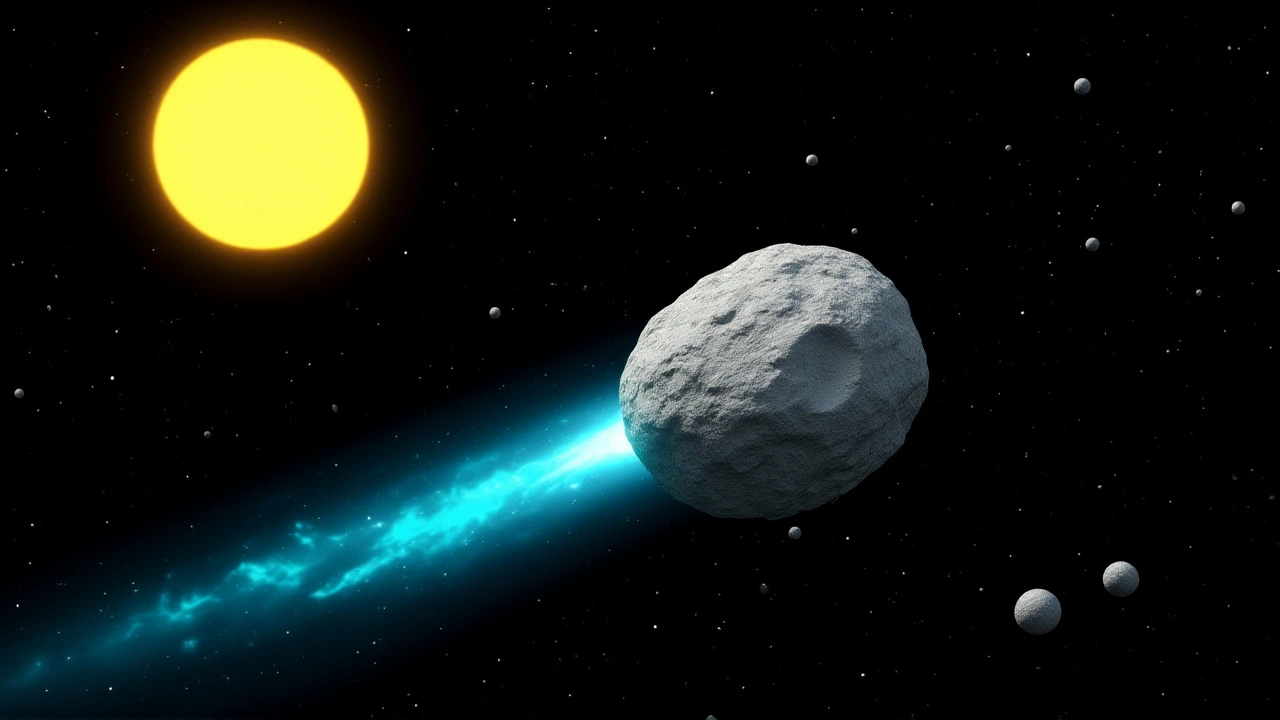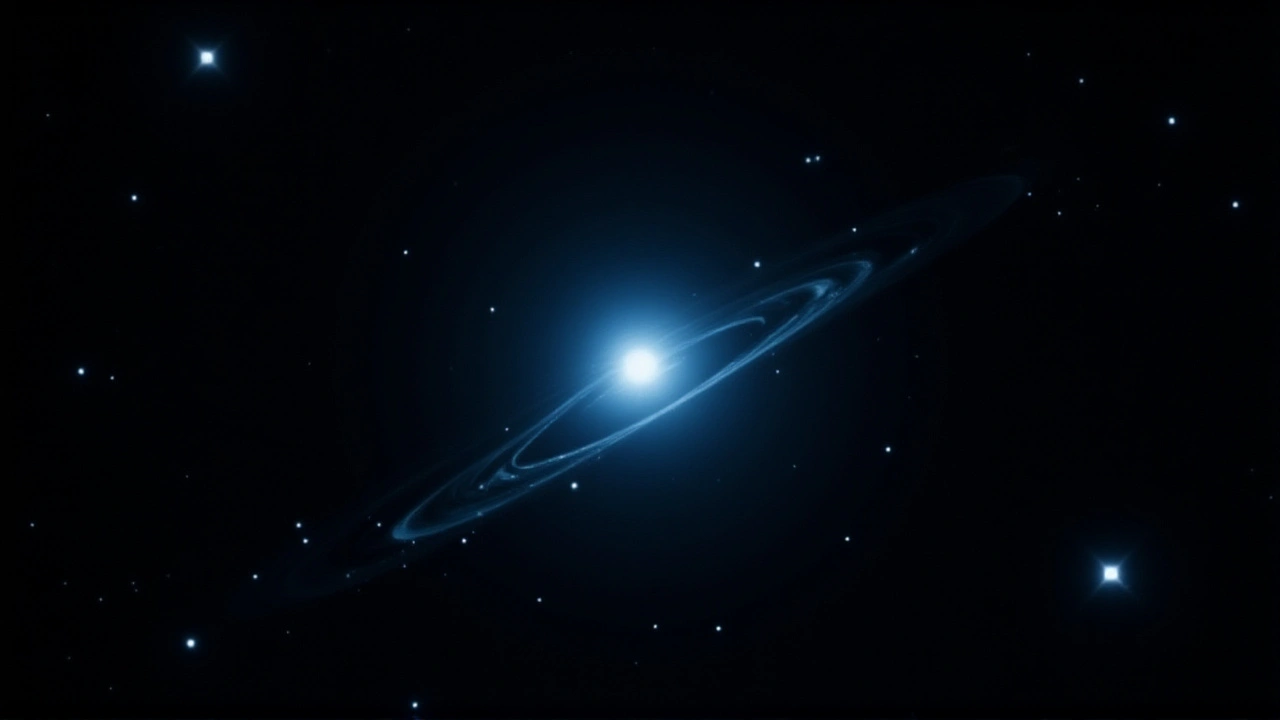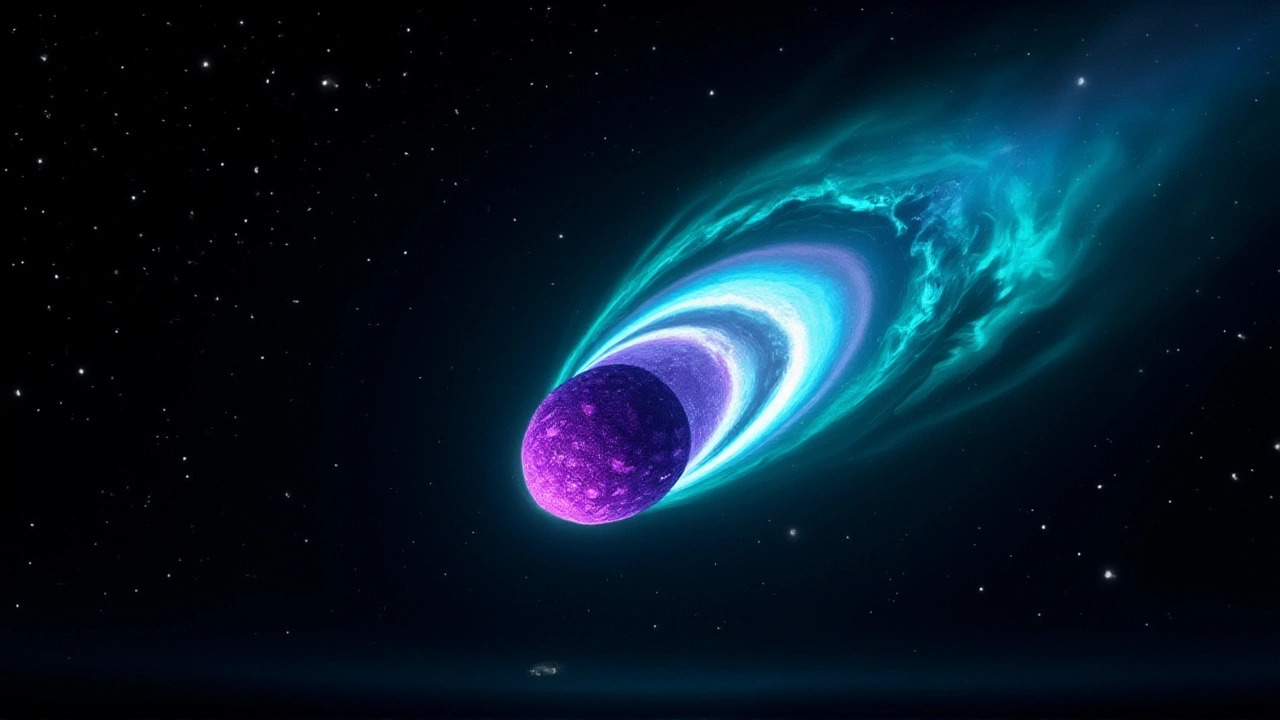NASA, ISRO Join Forces on Planetary Defense After 3I/ATLAS Sighting

When Dr. Swati Mohan, NASA’s Associate Administrator for the Science Mission Directorate learned that interstellar comet 3I/ATLAS would zip past Earth’s neighborhood this summer, the agency’s planetary‑defense office sounded the alarm, and ISRO was already on standby.
On July 30, 2025, the launch of NISARSatish Dhawan Space Center lifted off at 8:10 a.m. EDT aboard a GSLV Mk III rocket, marking the newest chapter of United States‑India space cooperation. While NISAR’s radar eyes are trained on Earth’s shifting ice, forests and wetlands, the joint agency partnership has a second, less publicized mission: keeping a close watch on any wayward space rocks that could threaten our planet.
Why 3I/ATLAS grabbed headlines
Discovered on January 2, 2022, by the ATLAS survey in Hawaii, 3I/ATLAS is only the second interstellar object ever observed passing through the Solar System after ‘Oumuamua. Its hyperbolic trajectory, a speed of roughly 33 km/s relative to the Sun, and a bright, comet‑like tail made it a perfect case study for scientists eager to understand material from beyond our own system.
“Every time an interstellar visitor shows up, it’s a chance to test our detection pipelines,” said Dr. Alan Stern, NASA’s chief scientist for planetary defense. The comet’s close approach – a minimum distance of about 0.20 AU (≈30 million km) on 28 October 2022 – was well outside any impact risk, but the event highlighted gaps in global monitoring that both NASA and ISRO are racing to fill.
How NASA and ISRO track comets today
NASA’s Near‑Earth Object Observations (NEOO) program leans on a fleet of ground‑based telescopes, the Pan‑STARRS system in Hawaii and the Catalina Sky Survey in Arizona, plus the space‑based NEOWISE infrared telescope. These eyes can spot objects as small as 140 m a few weeks before a potential impact.
ISRO, meanwhile, operates the Indian Space Research Organisation‑run Space Situational Awareness (SSA) program. It maintains the Uttarkashi Optical Telescope and the newly commissioned GST (Geostationary Satellite Tracking) network that can monitor near‑Earth space for debris and comets alike.
When a new object is flagged, both agencies feed the data into the International Astronomical Union’s Minor Planet Center, which then circulates orbital elements worldwide. The collaborative framework, formalised in a 2024 MoU, ensures that any potential threat triggers a joint analysis within 48 hours.
The NISAR mission: More than just Earth‑watching
Although NISAR’s primary goal is to map Earth’s surface changes with centimetre‑level precision, the mission’s synthetic‑aperture radar (SAR) can also contribute to space‑based object detection. Radar beams can pick up high‑altitude meteoroid streams and, in theory, large cometary nuclei that pass close enough to reflect a signal.
“We designed NISAR with a versatile payload on purpose,” explained Prof. K. Sivan, ISRO’s chairman. “If a bright comet shows up in the radar’s field of view, we can get a quick snapshot of its size and rotation, supplementing optical data.” The satellite’s 12‑day repeat cycle means it can revisit the same patch of sky regularly, filling gaps left by ground telescopes that suffer from weather or daylight limitations.

Responses from the scientific community
Experts applaud the growing synergy. “The more eyes we have, the sooner we can refine an object’s orbit and assess risk,” noted Dr. Carolyn Porco, former director of the Cassini imaging team. “NASA‑ISRO collaboration could become the gold standard for planetary defense.”
However, criticism remains. A 2023 review by the European Space Agency warned that radar‑based comet detection is still experimental and may not replace the need for dedicated infrared space telescopes. Others argue that focusing on Earth observation missions like NISAR could divert funding from building a purpose‑built interplanetary defense spacecraft.
Broader impact: Why planetary defense matters now
Statistically, Earth is hit by a 10‑metre rock about once a decade – enough to cause local damage but rarely a catastrophe. Larger threats, those over 140 m, occur on the order of once every 10,000 years, but the consequences could be global. The Chelyabinsk airburst in 2013, which injured 1,500 people, reminded the world that even relatively small bodies can wreak havoc.
With climate change already stressing ecosystems, a sudden impact could compound humanitarian crises. Hence, agencies are pushing for a layered approach: early detection, impact probability calculations, and, if needed, kinetic‑impactor missions like NASA’s DART (Double Asteroid Redirection Test) which successfully altered the orbit of asteroid Dimorphos in 2022.

What’s next for NASA‑ISRO planetary defense?
The next milestone is the scheduled 2026 launch of the HERMES (Highly Efficient Rapid Mitigation for Extraterrestrial Objects) cubesat, a joint prototype designed to test rapid‑response imaging of newly discovered comets. If successful, it could pave the way for a dedicated “deflection” spacecraft co‑developed by the two agencies.
Meanwhile, both NASA and ISRO are expanding their ground‑based networks. ISRO plans to commission a second optical telescope in the Himalayas by 2028, improving view‑angles for southern sky objects. NASA is upgrading the Pan‑STARRS array with larger mirrors, promising a 30 % increase in detection sensitivity.
All of this underscores a simple truth: protecting our planet is a shared responsibility that transcends borders. As more interstellar visitors like 3I/ATLAS appear, the collaborative framework forged between NASA and ISRO could be the living example that inspires other spacefaring nations to join the effort.
Key Facts
- Comet 3I/ATLAS passed Earth at 0.20 AU on 28 Oct 2022 – no impact risk.
- NISAR launched 30 Jul 2025 from Satish Dhawan Space Center on a GSLV Mk III.
- NASA‑ISRO MoU (2024) formalises data‑sharing for near‑Earth object (NEO) tracking.
- ISRO’s SSA program now includes the Uttarkashi Optical Telescope and GST network.
- Future joint projects: 2026 HERMES cubesat and expanded ground‑based telescope arrays.
Frequently Asked Questions
How does the NISAR satellite help in comet detection?
NISAR’s synthetic‑aperture radar can detect large, solid bodies that reflect radio waves. If a comet passes within the satellite’s line‑of‑sight, NISAR can capture its size, shape and rotation, providing data that complements optical observations, especially when weather or daylight hampers ground telescopes.
What role does ISRO’s Space Situational Awareness program play in planetary defense?
The SSA program tracks near‑Earth objects using a network of optical telescopes and radar stations across India. Data are sent to the International Astronomical Union’s Minor Planet Center, where they are merged with observations from other nations to calculate precise orbits and assess impact probabilities.
Why is international collaboration essential for planetary defense?
No single country can monitor the entire sky continuously. By sharing telescopic data, radar measurements and expertise, agencies like NASA and ISRO can reduce detection time from weeks to days, refine orbital models, and coordinate potential deflection missions, making the global response faster and more effective.
What are the next steps after detecting a hazardous comet?
Once a threat is identified, agencies calculate its impact probability and trajectory. If the risk exceeds a predefined threshold, they evaluate mitigation options such as kinetic‑impactors, gravity tractors, or, in extreme cases, nuclear devices. International bodies like the United Nations Office for Outer Space Affairs would then coordinate any deflection effort.
Has any interstellar object ever posed a danger to Earth?
Both ‘Oumuamua (2017) and 3I/ATLAS (2022) passed at safe distances—over 40 million km for ‘Oumuamua and about 30 million km for ATLAS. Their trajectories were well‑determined early on, showing no impact risk. Nonetheless, they serve as valuable drills for sharpening detection and response capabilities.
They say more telescopes equal better safety?? But have we even considered the massive budget cuts?? It's not like we need another radar to spot a rock we can already see from the ground!!
The recent NISAR launch represents more than a sophisticated Earth‑monitoring platform; it is a cornerstone for a truly global planetary‑defense network.
By leveraging synthetic‑aperture radar, scientists can acquire high‑resolution measurements of objects that would otherwise be invisible to optical telescopes during daylight or adverse weather conditions.
This capability fills a longstanding gap in our detection chain, complementing the efforts of ground‑based surveys such as Pan‑STARRS and the Catalina Sky Survey.
Moreover, the collaborative framework established by the 2024 NASA‑ISRO MoU ensures that data streams are shared in near real‑time, allowing analysts on both continents to cross‑validate orbital solutions within hours rather than days.
When a new near‑Earth object is flagged, the joint task force can immediately task NISAR’s radar to obtain a snapshot, reducing uncertainty in size and spin state estimates.
These refined parameters are critical for impact probability calculations, which feed directly into the decision‑making process for potential mitigation missions such as kinetic impactors.
In addition, the upcoming HERMES cubesat will provide rapid‑response imaging, creating a layered observation strategy that empowers us to act before a threat becomes imminent.
The synergy between NASA’s extensive network of space‑based infrared sensors and ISRO’s growing optical and radar infrastructure exemplifies how shared resources can amplify scientific return without unnecessary duplication.
From a broader perspective, this partnership sends a powerful diplomatic signal that planetary defense transcends geopolitical boundaries and requires collective stewardship of our planet.
It also encourages other space‑faring nations to contribute their own assets, fostering a truly multinational shield against extraterrestrial hazards.
While some critics argue that resources might be better allocated to dedicated deflection spacecraft, the reality is that detection remains the most cost‑effective line of defense.
Every additional observation window tightens the confidence intervals around an object’s trajectory, thereby shrinking the window of uncertainty that drives costly mission planning.
Investing in versatile platforms like NISAR also yields ancillary benefits for climate science, disaster monitoring, and resource management, ensuring that the scientific community gains across multiple domains.
Thus, the collaborative approach does not represent a compromise, but rather an optimization of limited budgets to address both immediate safety concerns and longer‑term scientific goals.
In short, the NASA‑ISRO alliance is setting a benchmark for how the international community can unite to safeguard Earth while advancing our understanding of the cosmos.
Anyone still doubting the necessity of this joint effort clearly missed the data trends 📊. It’s obvious that without coordinated radar and optical coverage we’d be blind to the very threats we claim to fear 😒.
Oh great, NASA and ISRO teaming up-just what the world needs, more space surveillance to watch *us*.
The integration of NISAR’s SAR subsystem into the planetary‑defense pipeline is an exemplar of cutting‑edge astrodynamics, a symphony of signal processing that elevates our detection fidelity to unprecedented strata. Yet, the public discourse often reduces this marvel to mere "space rocks", ignoring the profound engineering choreography that underpins every pixel of returned data.
i think the hype is overblown everyone forgets that most comets burn up long before they become a problem but still they spend billions on fancy toys
Seeing two of the world’s biggest agencies pool resources really shows how much we can achieve when we put competition aside and focus on protecting our shared home.
Honestly this whole “big budget” talk is just an excuse to spend money on flashy projects that definately won’t make a dent in the real threat.
Meh, another space program. Same old hype, same old promises.
We must ask ourselves whether investing in planetary defense is a moral imperative or a convenient distraction from deeper societal failures; it is easy to glorify rockets while ignoring the suffering on Earth that could be alleviated with the same funds.